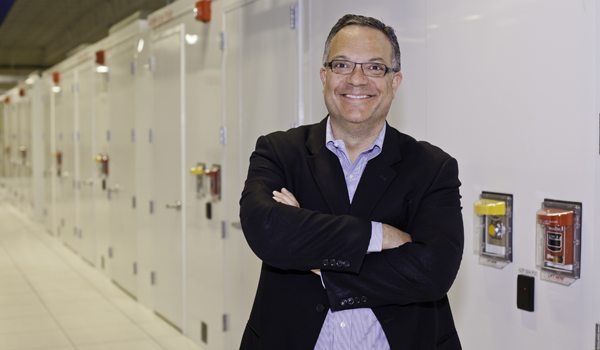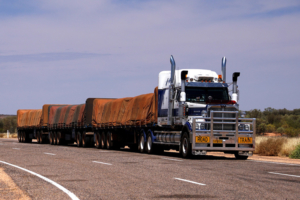Phoenix has its head in the clouds.
Digital information—everything from financial and medical accounts to media entertainment and social networks—is now being stored in about 60 high-tech data centers throughout the Phoenix metro area, adding to the state’s growing reputation in the technology industry.
Renewable energy, geo-stability and tech-friendly legislation are a few of the reasons why Arizona has one of the highest concentrations of data centers in the United States, second only to Virginia.
Chris Camacho, president and CEO of the Greater Phoenix Economic Council, says one of the reasons Phoenix has seen a significant level of data center activity is power availability and competitive pricing.
“We have very affordable power costs,” Camacho says. “Our utilities have been very flexible in supporting this industry to ensure we have dual feeds from the electrical standpoint. Having affordable power rates has been critical. The other attributes that are important to this industry as to why we have been successful are the level of infrastructure, that’s generally fiber infrastructure, and latency. We’re very favorable to the West Coast in that regard. So our communities, as well as Cox, Century Link and others, have done a great job extending infrastructure to support this industry.”
Demand for renewable energy
As data centers continue to propagate, the demand for power increases.
A recent survey by Mortenson Construction, one of the leading data center contractors in the U.S., reported 84 percent of responding data center executives, developers and operators believe there is a need to consider renewable energy. Energy efficiency is a top concern and nearly half the survey participants believe improved technology can increase energy efficiency.
“Technology companies like Apple, eBay, Amazon and Google, all of the organizations that store massive amounts of information, tend to have leaders who are highly environmentally conscious,” explains Steven G. Zylstra, president and CEO of the Arizona Technology Council, “They would much prefer to use renewable energy to power these data centers rather than power coming from a coal-burning plant. It’s less about the economics and more about doing the right thing.”
IO president Anthony Wanger agrees. IO, one of the largest colocation data centers in North America, has created and patented energy efficient data storage modules and operating software. In 2013, APS evaluated IO’s Power Usage Effectiveness ratings and determined the modules were more efficient than the traditional raised-floor data center environment.
In February, IO announced an agreement the company made with APS to be able to offer renewable energy to its customers.
“We had a break through,” Wanger said. “We were able to negotiate a rate with APS that allows us to buy renewable energy. We were able to get a rate that reflects the scale of our use, and the option for our customers to simply choose to go green. For about a cent and a half more per kilowatt hour they can buy energy that is 100 percent renewable. It’s solar and wind. We have had terrific customer feedback about it.
“It’s important for us,” Wanger continues. “We want to be leaders in dematerialization and we want to be leaders in giving our customers the tools and the choices they need to manage their energy needs. Our very largest customer, Goldman Sachs, is committed to zero carbon.
“We have taken great strides in moving our energy over to renewables. I’m not going to tell 1,000 customers what they have to do,” he explains, adding that if he puts it on the menu and incentivizes it, he believes they will choose it. “We are committed to renewables, we are leaders in energy efficiency, by putting it out there, it’s going to be a needle mover.”
Making it happen
IO began with three businessmen and a foldup table from Costco, Wanger said. The table, signed by the co-founders Wanger, George Slessman and William Slessman, is somewhere in the Phoenix facility as a reminder of how they began.
“I always liked to build things. I have always been fascinated by buildings and real estate and systems and machines,” says Wanger, who comes from several generations of entrepreneurs. “I was brought up in the ‘you make your job, you don’t get a job’ mentality. Sit down. Figure it out. Make it happen. That’s the only thing that works for me.
“We’ve been really fortunate we have a really solid business with terrific institutional backers and terrific institutional customers. We’ve been able to attract some terrific talent. The way we got here is people. When I say make it happen, it isn’t just the three of us, it’s the entire team.
“Make it happen. That really is the moral of our whole story here. These data centers didn’t build themselves. These folks didn’t employ themselves. The capital didn’t raise itself. The customers didn’t identify and sign themselves. This is hard work.
He suggests that in order for Arizona to continue growing its reputation in the technology arena, it, too, will take hard work.
“If Arizona wants to continue its fantastic growth it’s going to be because it chooses to, not because it happens automatically. I feel very positive about Phoenix and Arizona’s prospects, but I think we have to be careful not to take things for granted,” Wanger says. “It’s a very competitive economy. I think we would be well advised to be purposeful in our recruiting and the way in which we create a climate where risk takers can take risks.”
Trending
Wanger and his partners at IO, which now has six locations around the globe, were among some of the early risk takers in the data center industry.
“We grew up with the GoDaddy guys. If you go back 10 or 15 years ago, they were in data centers. We were in data centers. There was another guy in data centers and that’s about it,” Wanger says.
According to a market overview analysis by CBRE, today there are about 60 data centers in the Phoenix metro area, including colocation operations and those used by individual companies. An additional 21 greenfield sites have been identified mostly in the East Valley for build-to-suit data centers.
Even with the explosion of data centers in Phoenix, Wanger says he is seeing a trend toward consolidation.
“We are moving away from square footage to more power in less space with shared highly utilized banks of computers,” he says. “I think that the Internet went from 400 markets globally to 200 to 50 markets. I think it’s on its way to being in 12 markets globally. That’s mega consolidation. We are doing everything we can do in our power to make sure Phoenix is on the winner side of that equation.”
Tech magnet
Energy affordability, access and renewable options are sited as reasons for locating power-intensive data centers in Phoenix, but there are more.
Geo-stability is an important factor when deciding a data center’s location. Arizona is free of natural disasters, making it an appealing locale.
“We don’t have hurricanes, or earthquakes or tornadoes or floods or any of those things that jeopardize a data center. We are a very sound place from that standpoint,” Zylstra says.
Moderately priced real estate with relatively low property taxes and legislative incentives sweeten the pot.
“A lot of economic policies in the legislature have supported both enterprise use and colocation centers,” Camacho says. “More recently there was legislation in the last few years that provided a sales tax exemption on server and IT equipment. That was one of the last pieces of the puzzle of being a great market in terms of allowing this market to grow and making it competitive against California and these other states.”
According to CBRE, “The financial impact of this law to a 1 MW tenant’s bottom line could be as much as $6 million to $7 million in tax credit savings over a 10-year period.”
Camacho continues, “There are tax credits available for companies of a certain investment scale, so, in a certain investment threshold, when they meet that level of capital investment, they are eligible, assuming they are going to use significant renewable energy resources, to obtain a corporate income tax credit.”
(subhead)The future
Locating data centers here is often an introductory step for some of the larger companies to test the business waters and learn about the Phoenix area.
“We’ve spent a lot of time working to support colocation operations in the market that are already here,” Camacho says. “And we are working as diligently as we can as we travel outside this market and showcase Arizona marketplace to prospective users. We’ll showcase IO data centers and Digital Realty Trust and others that are in this region with the goal of inducing these tenants to come and utilize colocation space and drive new investment and job creation at the same time.
Proximity to California has made it convenient for companies with corporate headquarters on the West Coast to locate their data centers here. “It encourages them to visit and to learn more about the operating environment. Then our goal is to talk further with them about future operational expansion. It could be back office, IT, or technology centers. Data centers and data storage are generally their first foray into evaluating this market on the office side.
“Once you become a nerve center where companies store data, then you start seeing a lot of these colocation tenants that are in these major facilities evaluating opportunities for back office expansion which generally comes with more job creation,” Camacho says.
CBRE reports a high quality of life and low cost of living have encouraged back shop operations for companies such as Wells Fargo, American Express, PayPal, Yelp and others to locate here.
“Companies tend to aggregate around each other,” Zylstra says. “At some point you get to a critical mass that people recognize and they want to be affiliated with it, connected to it.
“The recent Apple announcement is a watershed moment for us,” Zylstra says, referring to Apple’s plans to locate a data center in Mesa. “Apple is the most innovative company on Earth today. It’s the most successful company on Earth. When that kind of company makes a commitment here in Arizona it suggests that we have come into our own. I believe it is an important milestone in becoming known for technology.”
As the technology sector continues to grow, it is important to attract quality talent, he says.“ The greater the reputation the easier it is to attract and retain talent and that’s your competitive asset in a digital economy,” he says.
Drawing in talent is important, Camacho agrees, but he also says it is important to provide a continuing pipeline of trained talent in IT and technical services through our local educational system.
“That’s what is going to make this industry successful,” Camacho says. “We can see that pipeline coming through our Maricopa Community Colleges and the four-year systems that can meet the demand.
“Even though they are not large employers, there’s a very significant level of indirect technology job creation associated with these data centers. On average, you can provide anywhere from two to four indirect jobs for each of the jobs created within the companies themselves.”




